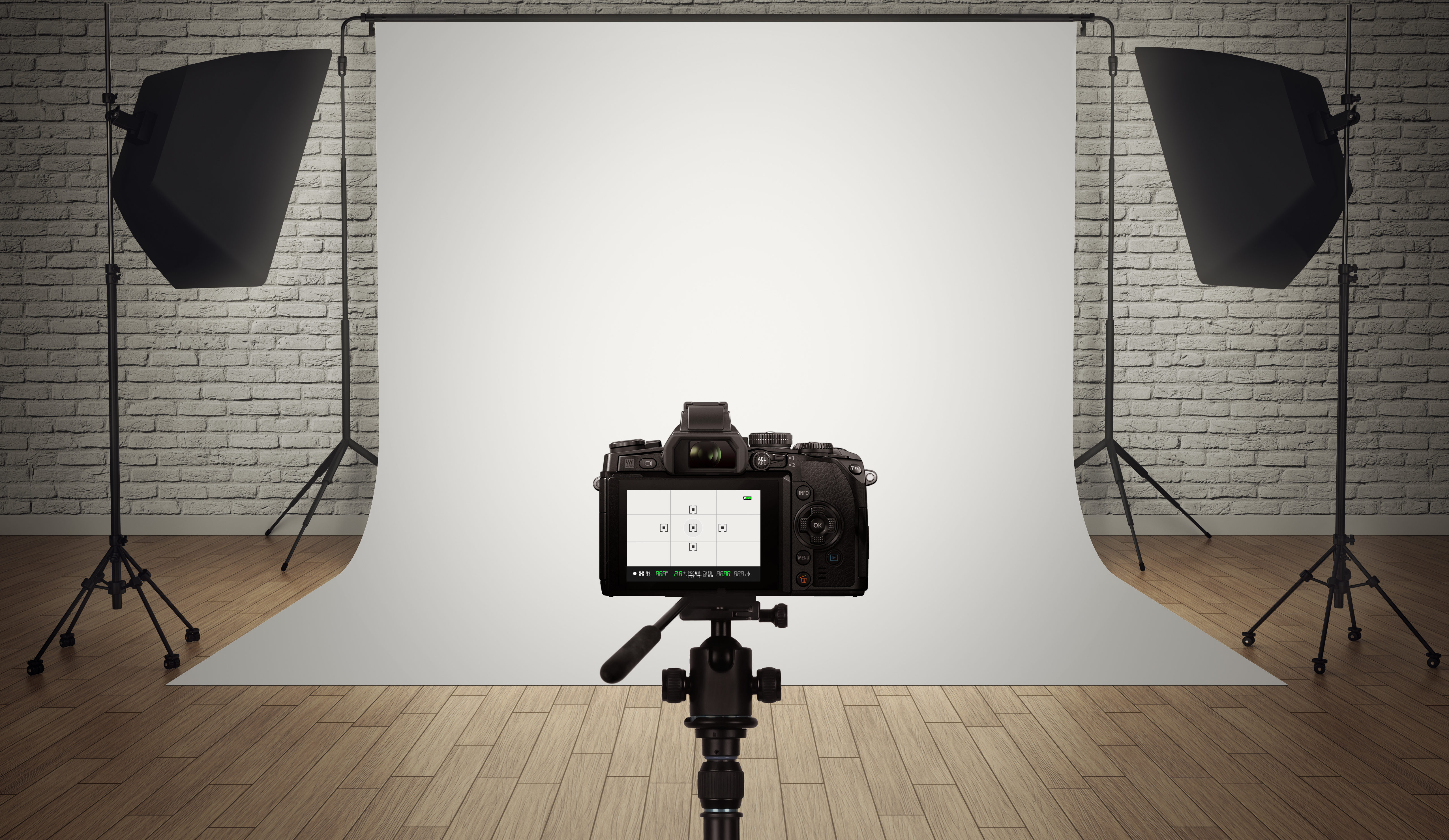IoT camera setup has become increasingly popular as more people seek ways to enhance their home security and monitor activities remotely. These smart devices offer unparalleled convenience, allowing users to access live feeds from anywhere in the world via an internet connection. Whether you're a tech enthusiast or someone looking to safeguard your property, understanding how to set up an IoT camera properly is crucial. This guide will walk you through every step, ensuring that you can harness the full potential of these cutting-edge devices without any hassle.
In today's digital age, security concerns are at an all-time high. With advancements in technology, IoT cameras have emerged as a reliable solution for monitoring homes, offices, and public spaces. These cameras provide real-time updates, motion detection alerts, and high-definition video quality, making them indispensable for modern surveillance needs. However, setting up an IoT camera isn't as straightforward as plugging it in and turning it on. There are several considerations to keep in mind, such as network compatibility, privacy settings, and optimal placement.
As we delve deeper into this article, you'll discover valuable insights into the world of IoT cameras. From choosing the right model to troubleshooting common issues, we'll cover everything you need to know. By the end of this guide, you'll be equipped with the knowledge and confidence to perform your own IoT camera setup seamlessly. So, let's get started and unlock the possibilities of smart surveillance technology.
Read also:Iroquois Cafe A Hidden Gem In The Heart Of Culture
What Are the Benefits of an IoT Camera Setup?
When it comes to home or business security, IoT cameras offer a wide array of advantages. First and foremost, they provide constant surveillance, ensuring that you're always aware of what's happening in your space. Additionally, these devices are equipped with features like night vision, two-way audio, and cloud storage, making them far superior to traditional security cameras. Another significant benefit is the ability to receive instant notifications on your smartphone whenever motion is detected, giving you peace of mind no matter where you are.
IoT cameras also integrate effortlessly with other smart home devices, creating a cohesive ecosystem that enhances convenience and security. For instance, you can set up automation rules so that your lights turn on or alarms sound when unusual activity is detected. Furthermore, many IoT camera models allow for remote access, enabling you to check in on your property from anywhere at any time. All these features make IoT camera setup a worthwhile investment for anyone looking to bolster their security measures.
How to Choose the Right IoT Camera for Your Needs?
Selecting the appropriate IoT camera can be a daunting task, given the vast array of options available in the market. To make an informed decision, consider factors such as camera resolution, field of view, and connectivity options. High-definition cameras provide clearer images, which is essential for identifying intruders or monitoring specific areas. Similarly, a wide field of view ensures that you capture more of your surroundings, minimizing blind spots.
Another critical aspect to evaluate is the camera's connectivity capabilities. Ensure that the model you choose supports your existing Wi-Fi network and has a strong signal range. Additionally, check if the camera offers local storage options in addition to cloud storage, as this can be beneficial in case of internet outages. By carefully assessing these factors, you can select an IoT camera that aligns perfectly with your requirements.
Can You Set Up an IoT Camera Without Professional Help?
Yes, setting up an IoT camera is generally a user-friendly process that doesn't require professional assistance. Most modern IoT cameras come with detailed instructions and mobile apps that guide you through the setup process step by step. Typically, the procedure involves downloading the manufacturer's app, creating an account, and connecting the camera to your Wi-Fi network. Once connected, you can customize settings such as motion detection sensitivity and notification preferences.
However, there may be instances where you encounter difficulties, especially if you're unfamiliar with networking concepts or have a complex home setup. In such cases, consulting the user manual or reaching out to the manufacturer's customer support can be helpful. Overall, with a bit of patience and attention to detail, you can successfully complete your IoT camera setup on your own.
Read also:Unveiling The Glamour Of Hollywood Health Spa New Orleans
What Are the Common Challenges in IoT Camera Setup?
While IoT cameras are designed to be user-friendly, there are some common challenges that users may face during the setup process. One prevalent issue is connectivity problems, where the camera fails to connect to the Wi-Fi network. This can occur due to weak signal strength, incorrect network credentials, or interference from other devices. Another challenge is configuring privacy settings, as users often find it difficult to strike a balance between security and convenience.
Placement of the camera is another area where users may struggle. Determining the optimal location requires careful consideration of factors like lighting conditions, field of view, and potential obstructions. Moreover, ensuring that the camera is securely mounted to prevent accidental damage or tampering is crucial. Addressing these challenges proactively can lead to a smoother IoT camera setup experience.
Why Is Network Configuration Important in IoT Camera Setup?
Network configuration plays a pivotal role in the success of your IoT camera setup. Since these devices rely on a stable internet connection to function effectively, any issues with your network can hinder their performance. For instance, if your Wi-Fi signal is weak or inconsistent, you may experience lag in video streaming or delayed notifications. To avoid such problems, it's essential to conduct a thorough analysis of your network setup before installing the camera.
Consider upgrading your router if it's outdated or doesn't support the latest Wi-Fi standards. Additionally, placing the router in a central location can improve signal coverage throughout your property. You may also want to create a dedicated network for your IoT devices to enhance security and prevent bandwidth congestion. By prioritizing network configuration, you can ensure that your IoT camera setup operates optimally.
How Can You Secure Your IoT Camera Setup?
Security should be a top priority when setting up an IoT camera. These devices collect sensitive data, making them attractive targets for hackers. To safeguard your privacy, start by changing the default login credentials to a strong, unique password. Avoid using easily guessable information like "1234" or "password." Furthermore, enable two-factor authentication if the camera supports it, adding an extra layer of protection.
Regularly update the firmware of your IoT camera to patch any security vulnerabilities. Manufacturers frequently release updates to address bugs and enhance device performance. It's also advisable to review the camera's privacy settings and disable any features you don't need. By implementing these security measures, you can enjoy the benefits of your IoT camera setup without compromising your personal information.
What Are the Best Practices for IoT Camera Setup?
Adhering to best practices can significantly improve the effectiveness of your IoT camera setup. Begin by choosing a strategic location for the camera, ensuring that it covers critical areas like entry points and high-traffic zones. Mount the camera securely to prevent it from being easily removed or tampered with. Additionally, position it at an angle that minimizes glare from windows or artificial lighting.
Test the camera's functionality thoroughly after installation to confirm that it's working as intended. Check the video quality, motion detection accuracy, and notification delivery. If necessary, make adjustments to the camera's settings until you achieve the desired results. Lastly, educate family members or employees about the camera's features and proper usage to maximize its utility.
Can You Use Multiple IoT Cameras in One Setup?
Yes, it's entirely feasible to use multiple IoT cameras in a single setup. In fact, deploying several cameras can provide comprehensive coverage of your property, eliminating blind spots and enhancing overall security. Most IoT camera systems allow you to connect multiple devices to a single account, enabling you to monitor all cameras from a centralized interface. This setup is particularly beneficial for larger homes or businesses with multiple entry points.
When using multiple IoT cameras, ensure that each device is configured correctly and doesn't interfere with the others. Assign unique names to each camera for easy identification and organize them into groups based on location or function. Additionally, verify that your network can handle the increased bandwidth requirements to avoid performance degradation.
Where Should You Place Your IoT Camera Setup?
The placement of your IoT camera is crucial for capturing meaningful footage and ensuring maximum security. Ideally, position the camera in areas that are most vulnerable to unauthorized access, such as doors, windows, and driveways. Avoid placing the camera in direct sunlight or areas with poor lighting, as this can affect video quality. Consider installing the camera at a height that provides an unobstructed view of the surrounding area.
For indoor installations, place the camera near valuable items or in rooms where people spend most of their time. Use adjustable mounts to fine-tune the camera's angle and ensure that it captures the intended area. Remember to respect privacy laws and avoid pointing the camera towards neighboring properties or private spaces.
Final Thoughts on IoT Camera Setup
Setting up an IoT camera may seem intimidating at first, but with the right approach, it can be a straightforward and rewarding process. By understanding the benefits, selecting the appropriate device, and following best practices, you can create a robust security system that meets your needs. Remember to prioritize security and network configuration to ensure that your IoT camera setup functions optimally.
As technology continues to evolve, IoT cameras will undoubtedly become even more advanced, offering enhanced features and capabilities. Stay informed about the latest developments and consider upgrading your setup periodically to take advantage of new innovations. With this guide, you're well-equipped to embark on your IoT camera setup journey and enjoy the peace of mind that comes with enhanced security.
Table of Contents
- Mastering the Art of IoT Camera Setup: A Comprehensive Guide
- What Are the Benefits of an IoT Camera Setup?
- How to Choose the Right IoT Camera for Your Needs?
- Can You Set Up an IoT Camera Without Professional Help?
- What Are the Common Challenges in IoT Camera Setup?
- Why Is Network Configuration Important in IoT Camera Setup?
- How Can You Secure Your IoT Camera Setup?
- What Are the Best Practices for IoT Camera Setup?
- Can You Use Multiple IoT Cameras in One Setup?
- Where Should You Place Your IoT Camera Setup?


